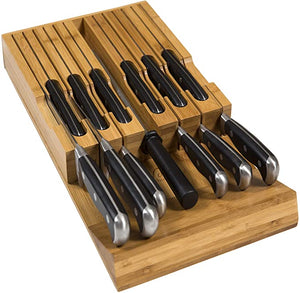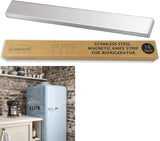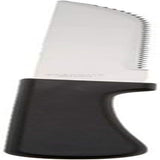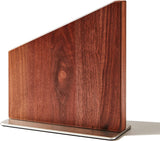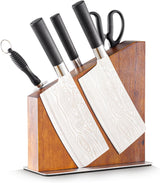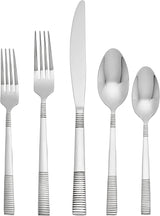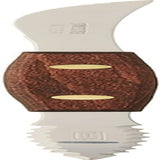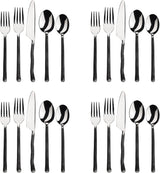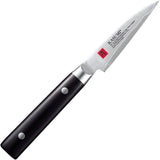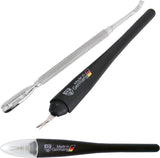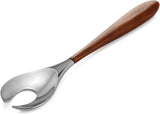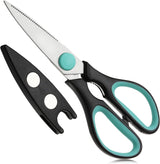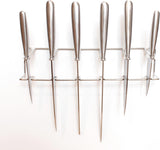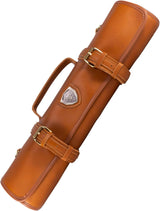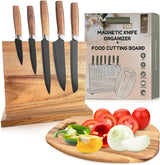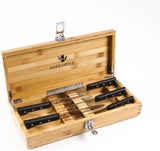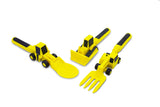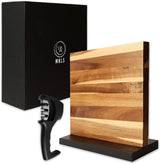The Art of Sharpening Damascus Kitchen Knives: A Comprehensive Guide for Kitchen Hobbyists
Introduction
Picture this: You're standing in your kitchen, the heart of your home, preparing to slice into a ripe, juicy tomato. You reach for your favorite knife, a beautiful Damascus kitchen knife, and instead of a satisfying slice, you're met with a disappointing squish. It's a scenario no kitchen hobbyist wants to find themselves in. But fear not, this comprehensive guide will walk you through the process of sharpening your Damascus kitchen knives, ensuring every cut is as satisfying as the first.
The Mystique of Damascus Kitchen Knives
Before we delve into the sharpening process, let's first understand what Damascus kitchen knives are. Named after the city of Damascus, known for its ancient sword-making techniques, these knives are renowned for their distinctive patterned blades and exceptional sharpness. They are crafted by folding and hammering steel multiple times, resulting in a blade that is both tough and flexible. This unique construction makes them one of the best kitchen knives available, but it also requires special care when it comes to sharpening.
The beauty of Damascus kitchen knives lies not only in their functionality but also in their aesthetics. The intricate patterns on the blade, reminiscent of flowing water or rippling sand, are a testament to the craftsmanship that goes into each knife. These patterns are not merely decorative; they are the result of the layered steel construction that gives Damascus knives their superior performance.
The Importance of Keeping Your Damascus Kitchen Knives Sharp
A sharp knife is not just a tool; it's an extension of the chef's hand. It allows for precision and control, making cooking a more enjoyable and efficient process. Moreover, a sharp knife is safer to use. A dull blade requires more force to cut, increasing the chance of the knife slipping and causing an injury. Regular sharpening of your Damascus kitchen knives ensures they remain at their peak performance, providing you with clean, precise cuts every time.
The Science Behind Knife Sharpness
To understand the importance of knife sharpness, we need to delve a little into the science behind it. The edge of a knife is essentially a simple machine known as a wedge. The sharpness of a knife is determined by the thinness of this wedge. A sharper knife has a thinner wedge, which requires less force to cut through food.
When a knife is used, the thin edge of the wedge can get bent or dulled, reducing its effectiveness. Sharpening a knife involves removing a small amount of material from the blade to create a new, sharp edge.
The Sharpening Process
Sharpening Damascus kitchen knives involves a few key steps: understanding the blade's angle, choosing the right sharpening stone, and using the correct technique.
Understanding the Blade's Angle
The angle at which you sharpen your knife is crucial. Most Damascus kitchen knives have an angle of 15 to 20 degrees. If you're unsure, it's best to check with the manufacturer. Maintaining this angle during sharpening ensures the edge remains sharp and durable.
Choosing the Right Sharpening Stone
Sharpening stones, also known as whetstones, come in different grits. A lower grit number (like 200-800) is used for repairing chips or reshaping the blade, while a higher grit number (like 1000-3000) is used for general sharpening. An even higher grit (6000 or above) is used for polishing and refining the edge. For Damascus kitchen knives, a combination stone with a 1000 grit side for sharpening and a 6000 grit side for polishing is often recommended.
The Sharpening Technique
Sharpening a knife is a skill that requires patience and practice. Here's a step-by-step guide to help you master this technique:
-
Wet the stone: Soak your sharpening stone in water for about 10 minutes, or until bubbles stop forming. This lubricates the stone and prevents the blade from overheating, which can affect its temper.
-
Hold the knife at the correct angle: Position the blade against the stone at the correct angle. Hold the knife with one hand on the handle and the other on the spine to maintain control.
-
Sharpen the blade: Using moderate pressure, slide the blade across the stone in a sweeping motion, as if you're trying to slice a thin layer off the stone. Repeat this process until you can feel a 'burr' or rough edge on the opposite side.
-
Flip and repeat: Once you've formed a burr, flip the knife and repeat the process on the other side.
-
Polish the edge: Finally, using the finer grit side of the stone, polish the edge by repeating the same sweeping motion. This refines the edge and gives your knife that razor-sharp finish.
Remember, the goal of sharpening is not to remove as much material as possible, but to create the sharpest edge with the least amount of material removal. This prolongs the life of your knife and maintains its performance.
Honing: The Unsung Hero of Knife Maintenance
While sharpening is crucial, it's only part of the knife maintenance process. Honing, often overlooked, is just as important.
Honing doesn't remove material from the blade; instead, it realigns the edge of the blade, straightening any microscopic bends that may have formed during use. This keeps the edge sharp and prolongs the time between sharpening.
To hone your knife, you'll need a honing rod, also known as a sharpening steel. Hold the rod upright and draw the knife down the rod at the correct angle, alternating sides with each pass. A few passes are usually enough to realign the edge and restore the knife's sharpness.
Maintaining Your Damascus Kitchen Knives
Sharpening your knives is only part of the equation. Proper maintenance is key to preserving their sharpness and prolonging their lifespan. Here are a few tips:
-
Clean your knives properly: After each use, clean your knives with warm soapy water and dry them immediately to prevent rusting. Avoid putting them in the dishwasher as the high heat and harsh detergents can damage the blade.
-
Store them correctly: Store your knives in a knife block or on a magnetic strip to protect the blades from damage.
-
Use the right cutting surface: Hard surfaces like glass or granite can dull your knives quickly. Use a wooden or plastic cutting board instead.
Conclusion
Sharpening your Damascus kitchen knives might seem like a daunting task, but with the right knowledge and a little practice, it becomes a rewarding ritual. Not only does it ensure your knives stay in top condition, but it also enhances your cooking experience, making every slice, dice, and chop a pleasure. So, embrace the art of sharpening and let your Damascus kitchen knives shine in all their sharp, gleaming glory.
Remember, a well-maintained knife is more than just a tool—it's a testament to your passion for the culinary arts. So, keep your blades sharp, your skills sharper, and continue to create culinary masterpieces in your kitchen. Happy cooking!
